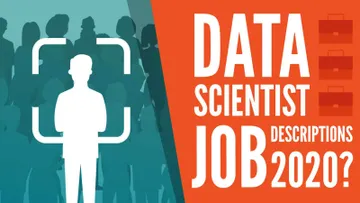Author’s Note: This article was originally published in 2020 and offers valuable insights and perspectives based on the available knowledge at the time of its publication. You can find the most up-to-date information in our new research, The Data Scientist Job Outlook in 2023.
The data scientist from 2018 to 2020: What has changed?
For the last 3 years, we at 365 Data Science have been trying to answer one big question: “What makes a data scientist?”
Since we are talking data science, the only logical way to approach the question is to ask the data. And that’s what we’ve done for 3 consecutive years. Since 2018 we have explored 1001 data scientist LinkedIn profiles to uncover the most interesting trends in the data science field.
In this article, we will go through the most important findings from the last 3 years. We have also created a very cool and interactive PowerBI dashboard which you can use to analyze the data yourself.
If you prefer to digest our own analysis, just keep on reading.
According to the data, the average data scientist from 2018 to 2020 is a male with a second-tier degree, coming from a quantitative background, which is not necessarily data science or computer science.
Their preferred programming language is Python, but they’d often know R and SQL. Many of the new data scientist positions are being filled by people who are already data scientists. So, the field feels much more saturated. Getting into data science still looks like a great opportunity, but the ‘data scientist’ position becomes more and more exclusive. 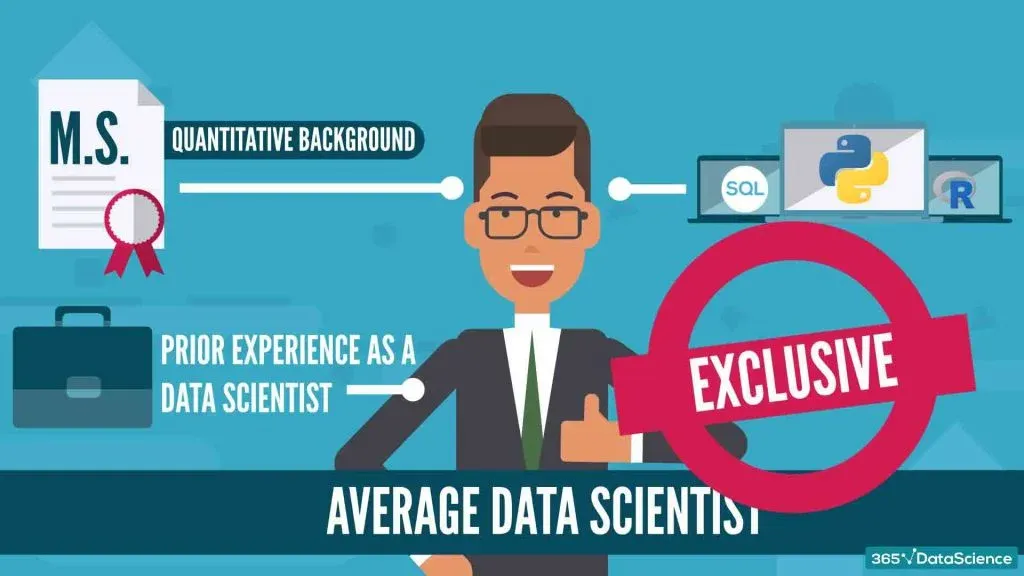
That said, let’s dive deeper into the education, years of experience, and programming skills of a data scientist from 2018 to 2020.
What Education Makes a Data Scientist from 2018 to 2020?
Our sample shows that at least 80% of the people held a minimum of a Master’s degree.
This isn’t as surprising, considering data science is a field that expects advanced know-how from the person — usually achieved by graduate or postgraduate types of education, or independent advanced research in other cases.
And while specialization is important, a Ph.D. is not really a requirement for breaking into data science.
Indeed, over the years, the number of Ph.D. holders has remained consistent, making up about 27% of our study.
On the contrary, starting from 2018 there was a rise of about 20% in the professionals with a Master’s degree compared to the 2019 cohort. 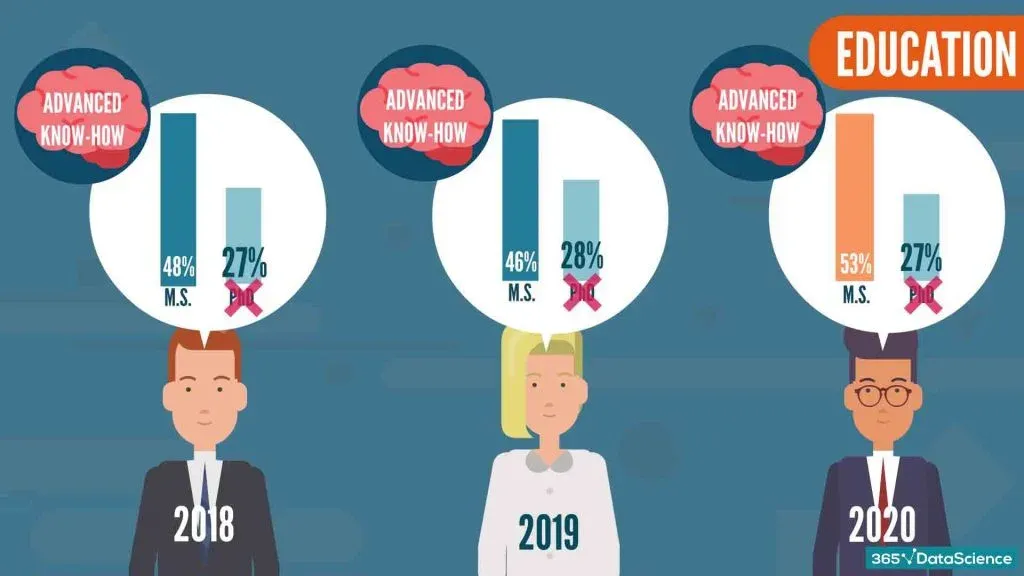
What Area of Studies Makes a Data Scientist from 2018 to 2020?
In 2018 and 2019, “Economics and Social Sciences”, “Computer Science” and “Statistics and Mathematics” were filling up the top 3 most popular fields of study of data scientists. 2020 was the first year ever that featured “Data Science and Analysis” (22%) as the top degree. Therefore, we can assume that universities have started to catch up with the demand for data science education.
Graduates from the Engineering, Natural Sciences, and Other fields constitute approximately 11% of our data each. This indicator has remained stable throughout the years.
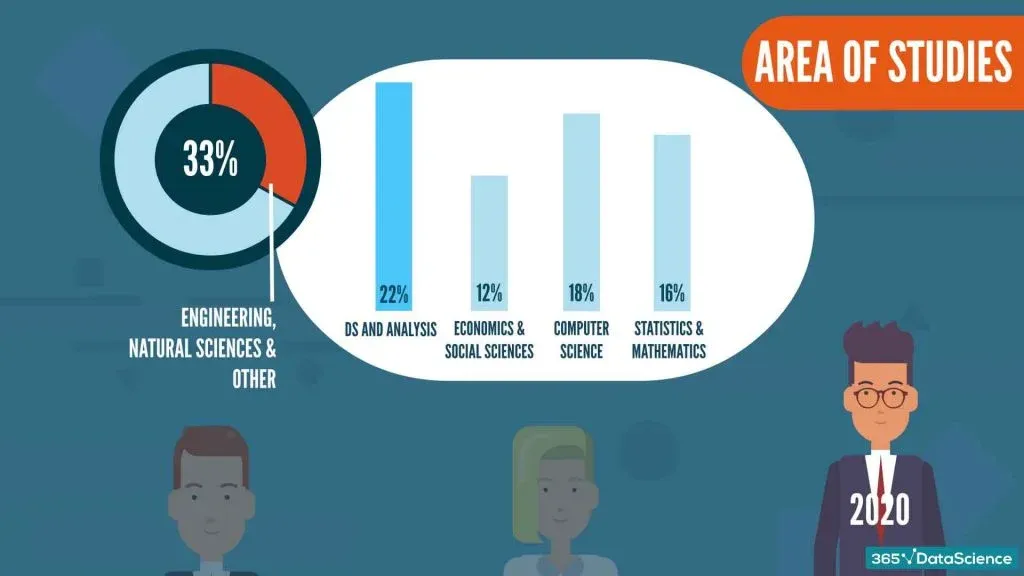
Interestingly, in 2020, most women in our sample have earned a ‘Statistics and Mathematics’ related degree (24% of the female cohort). In comparison, men most likely earned a degree in Data Science and Analysis (22%), with Computer Science (19%) being a close second. 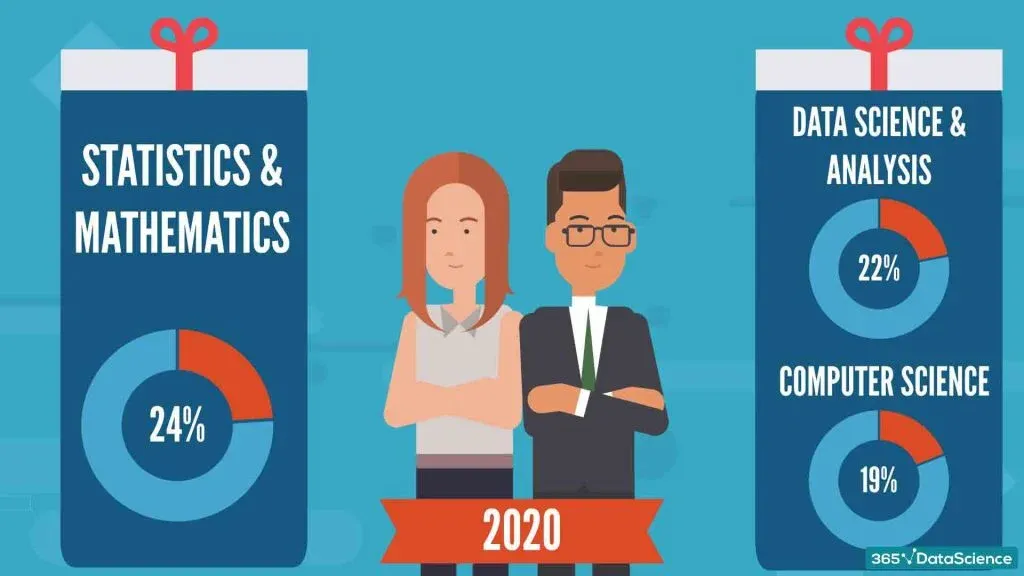
How Many Years on the Job Make a Data Scientist from 2018 to 2020?
If you are changing jobs or working through your data analyst years, you must be wondering whether you’ve got the right experience for the position. In terms of tenure, in 2018 almost all data scientists were ‘newcomers’ to the ‘data scientist’ position. Some of this stemmed from name changes to their occupation, but mostly – the supply was so little that it was way easier to enter the field.
Currently, we are observing a much tougher playing field.
The majority of data scientists have more than 2 years on the job. And it seems like a very small proportion of the total data scientist pool is new. In fact, in 2020, 52% of the cohort, held the title ‘data scientist’ at their previous position.
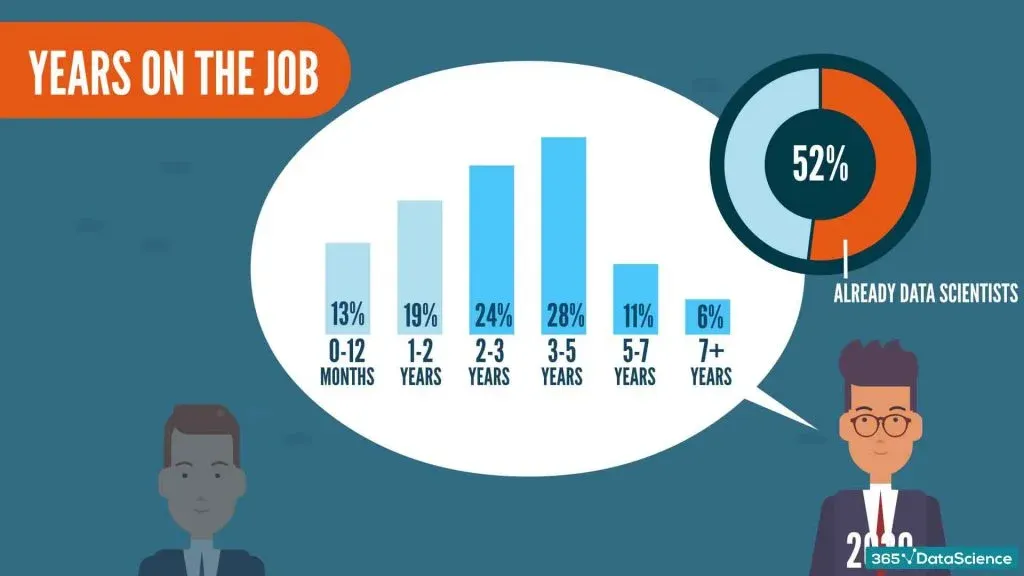
What Programming Languages Make a Data Scientist from 2018 to 2020?
The programming skills a data scientist needs are arguably the most interesting area of research (at least for us). For many years, R was the preferred language a data scientist was expected to “speak”. In 2018 and 2019 Python started ‘eating away at R’. And it did so at a very fast pace. In 2020, we have reached the point where Python is by far the preferred programming language in the data science community with 74% adoption! R is not completely overthrown but becomes less and less favored among professionals.
An interesting development is the rapid year-to-year growth of SQL users. In 2020, more than 50% of data scientists actively use the language.
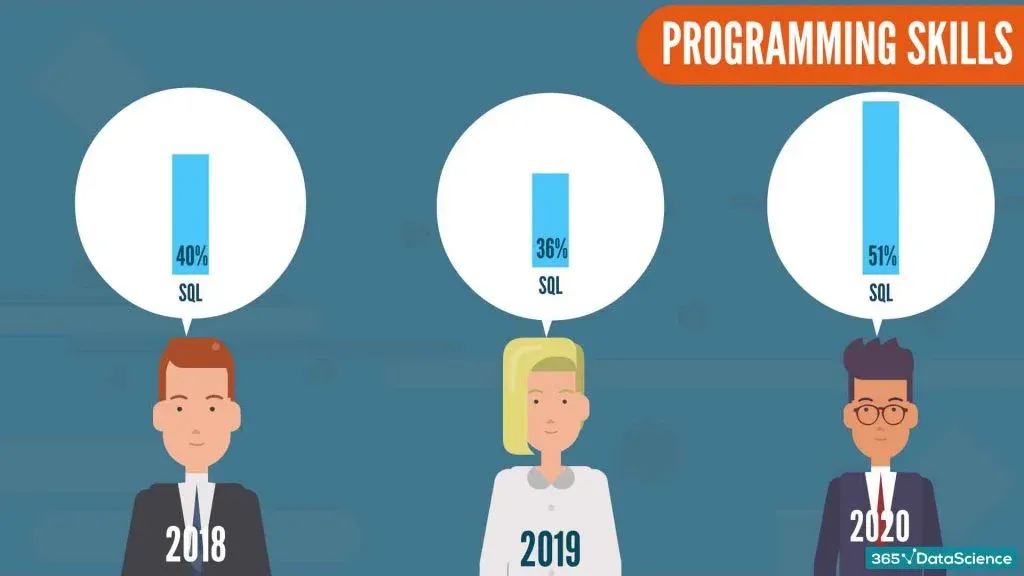
One common assumption is that companies expect from a data scientist to solve all their data-related problems; no matter if they are related to data engineering or data architecture. On another note, the adoption of BI software such as PowerBI and Tableau has also demanded a higher understanding of databases. Inevitably, data scientists had to add SQL to their toolbelt for the sake of ‘getting the job done’. 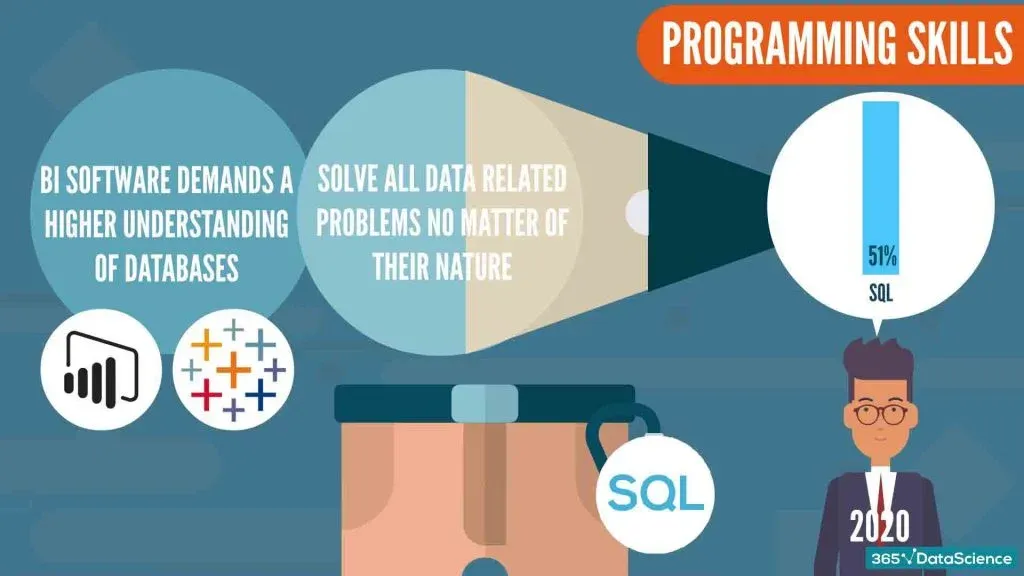
What Makes a Data Scientist from 2018 to 2020: In Conclusion
Looking at the data, the answer to “What makes a data scientist?” becomes clearer. Professionals are paving the way and universities are starting to provide a more tailored education.
From a career point of view, it seems that it is getting harder to become a data scientist. That's mainly because data scientists tend to stay on their job for a longer period. However, different opportunities to get into the field remain, as demand still varies across countries and industries.
One thing is for sure – learn Python, if you are to become a data scientist!
And if you’d like to become an expert in all things data science, check out our career resources and hands-on tutorials.
Ready to take the next step towards a data science career?
Check out the complete Data Science Program today. Start with the fundamentals with our Statistics, Maths, and Excel courses. Build up a step-by-step experience with SQL, Python, R, Power BI, and Tableau. And upgrade your skillset with Machine Learning, Deep Learning, Credit Risk Modeling, Time Series Analysis, and Customer Analytics in Python.Still not sure you want to turn your interest in data science into a career? You can explore the curriculum or sign up for 12 hours of beginner to advanced video content for free by clicking on the button below.

